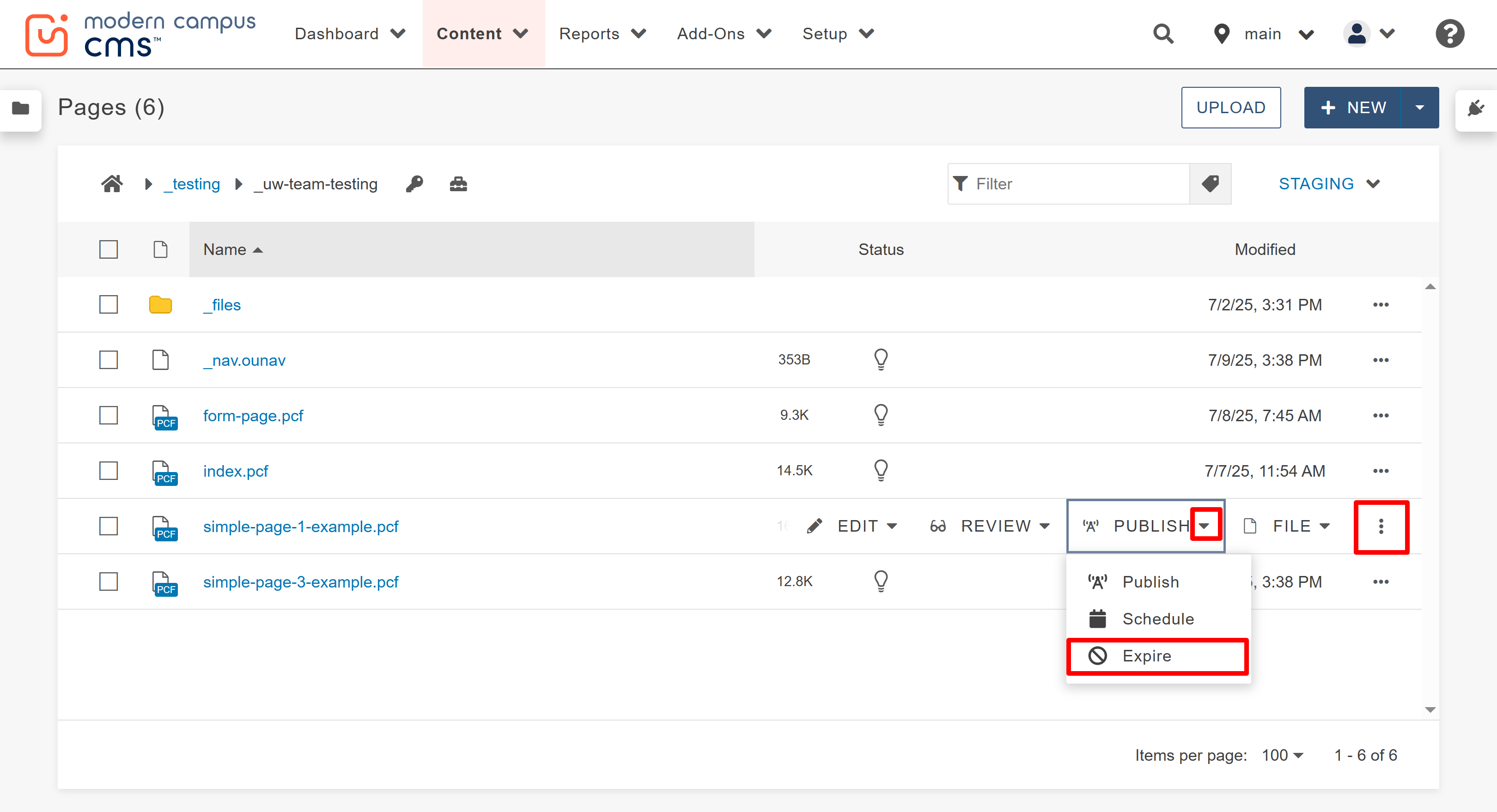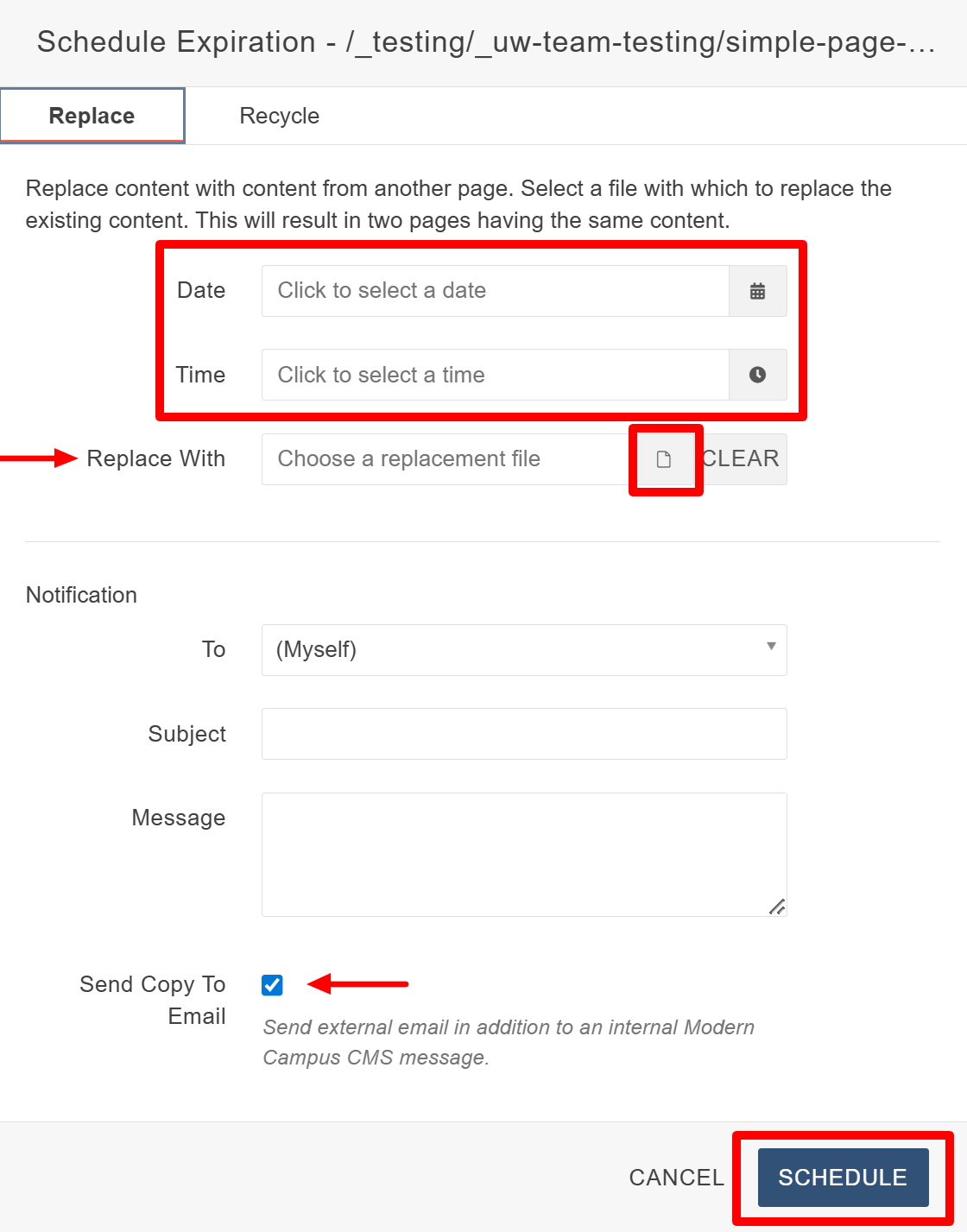There are a few important notes to keep in mind when using this function:
- Identify the webpage that you want to keep and the one whose information you want to replace it with including its template, content, and any other relevant information. Let's refer to them as "Page A" (the page name/location you want to keep) and "Page B" (the contents you’ll use to replace page A’s content).
- Both pages (A & B) must be published on the Production server for this function to work.
- This is not a “combining” feature. Only one page should be kept in the CMS.
- This is also not a “swapping” feature. You cannot swap the content between two pages.
- Expiring a page works most reliably when scheduled out a minimum of 30 minutes from the time you complete the function.
- Never keep both pages. This is intended to keep Page A and remove Page B.
This can be a complex function so we highly recommend watching this tutorial while
following allowing the the steps on this page.
Please Note: this tutorial references older templates no longer avialable in the CMS, however the function is the exact same.
Steps to Replace Your Page's Contents
Let’s cover the steps used to Schedule an Expiration and replace the content of our "Page A" with content from "Page B." Both pages must already be built and published to continue.
STEP 1: Identify the target and draft pages: Identify the page with the name and location that you want to keep, but have the page's contents expired and replaced. This is what we will call Page A. Then, identify the page that is serving as a draft, with the template and content that you want but not the name and location that you want to keep. This is what we will call Page B.
>STEP 2: Schedule expiration: Schedule the expiration for Page A. There are two ways to do this.
- While you have Page A open to preview or edit, select the dropdown menu on the green Publish button, and then select Expire.

- From the folder structure view, locate the page. Then, select the three dots at the right of the file name. From the menu that appears, select the dropdown menu next to Publish, and then select Expire.

STEP 3: In the Schedule Expiration pane, set the expiration date at least 30 minutes in the future.
STEP 4: In the Replace With box, select the paper icon to locate and select Page B.
STEP 5: Adjust the notification settings you wish to be notified through and click the SCHEDULE
button. You do not need to republish either page.

STEP 6: After your expiration has taken place, navigate back to Page A to ensure its contents have been replaced with Page B’s content.
STEP 7: Once this has been verified, move Page B to the Recycle Bin to remove it from your
site’s directory, and you’re done!

